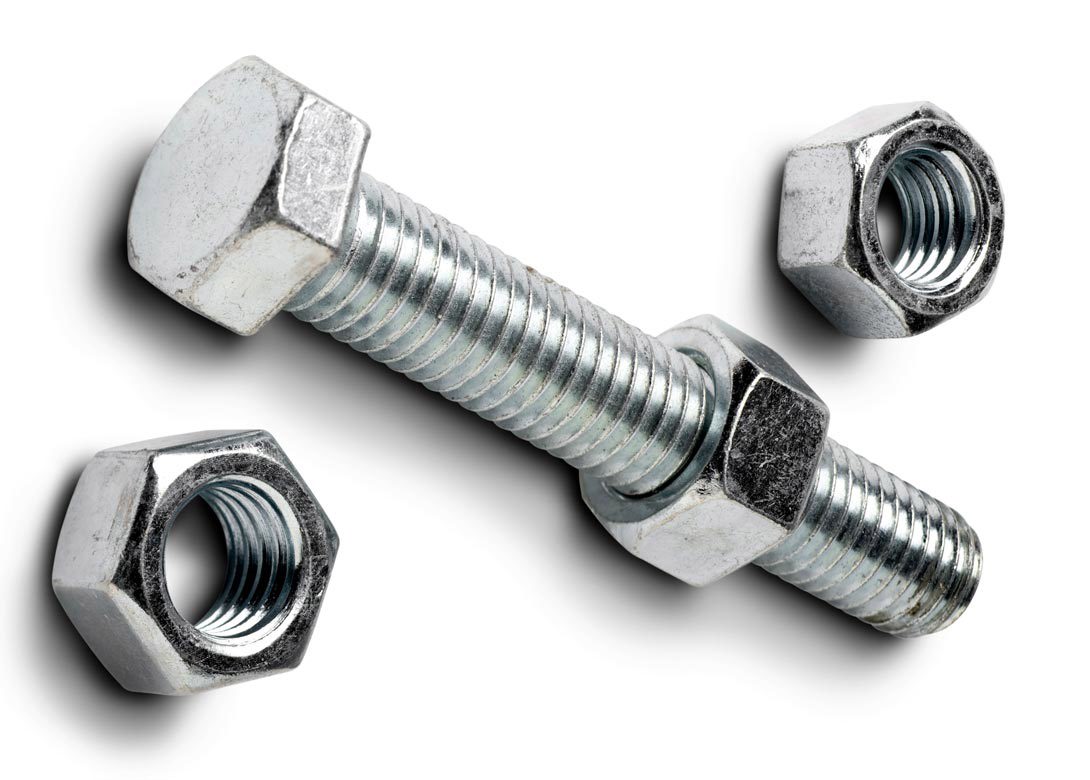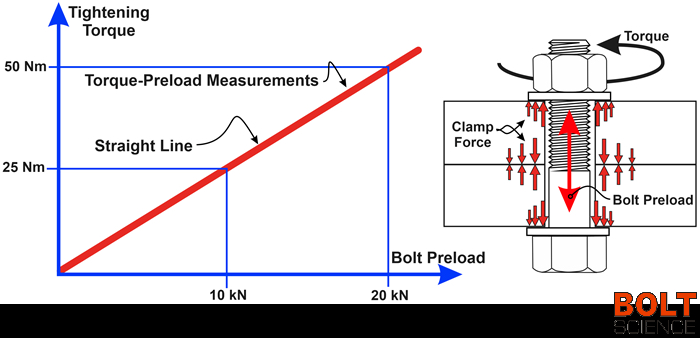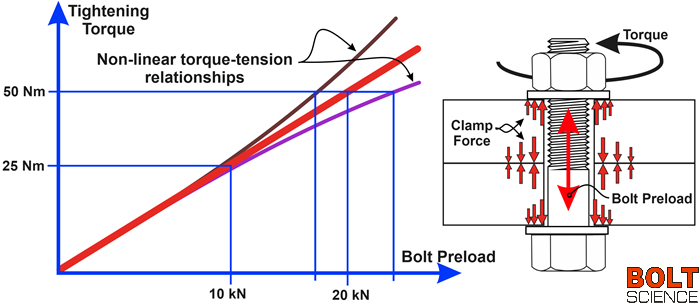
By Dr Bill Eccles, Bolt Science
When a nut is tightened by applying a torque, the bolt is stretched and a tensile force in the bolt, known as the preload, is created that resists this stretching. In response to this preload, a clamp force on the joint is generated – a clamp force that is vital in many instances for the joint’s structural integrity.
Since the preload itself is difficult to measure, and there is no low cost and effective method, the torque being applied to the fastener is used instead to assess if it has been sufficiently tightened. The relationship between the torque being applied and the bolt preload is linear. That is, when you plot out the relationship between the two by measuring both, you get a straight line as shown in Figure One.
fastener is used instead to assess if it has been sufficiently tightened. The relationship between the torque being applied and the bolt preload is linear. That is, when you plot out the relationship between the two by measuring both, you get a straight line as shown in Figure One.
So, for any particular bolt, if you double the applied torque you will also double the preload – this is assuming that the bolt material doesn’t yield or the thread starts to strip. This linear behaviour forms the basis of the torque calculation processes. For example, the simple K factor approach in which the formula (T = F x D x K) where T is the torque, D is the bolt diameter and K is the nut factor, otherwise known as the torque coefficient.
For a given bolt diameter and coating condition, ‘K’ is assumed to be a constant and so the formula is essentially that torque (T) is proportional to preload (F). This is a straight line relationship between the applied torque and the preload. The same reasoning can be shown to apply to the long form version of the torque tension equation that uses friction coefficients instead of the ‘K’ factor.
 At Bolt Science we have conducted thousands of torque tension tests. Occasionally, we come across the situation where the graph of torque against preload is not linear, instead the graph is a curve, as demonstrated in Figure Two. The graph of torque against preload may curve upwards, or downwards, depending upon circumstances.
At Bolt Science we have conducted thousands of torque tension tests. Occasionally, we come across the situation where the graph of torque against preload is not linear, instead the graph is a curve, as demonstrated in Figure Two. The graph of torque against preload may curve upwards, or downwards, depending upon circumstances.
In this instance, if the torque is now doubled, the preload can be greater than double, as in the case when the curve gradient is decreasing, or less than double, in the case when the curve gradient is increasing. The causes of non-linear torque-tension relationships are discussed in a recently published training presentation on the Bolting Technology for Engineers and Designers online course. Further details about the course are available at: https://www.boltscience.com/pages/training1.htm

Becca is the latest member to join our team and is eager to get stuck into the world of fasteners. She brings an enthusiastic and fresh outlook on what we do editorially and will be leading our social media activity – including sourcing material, editing articles and posting online.





